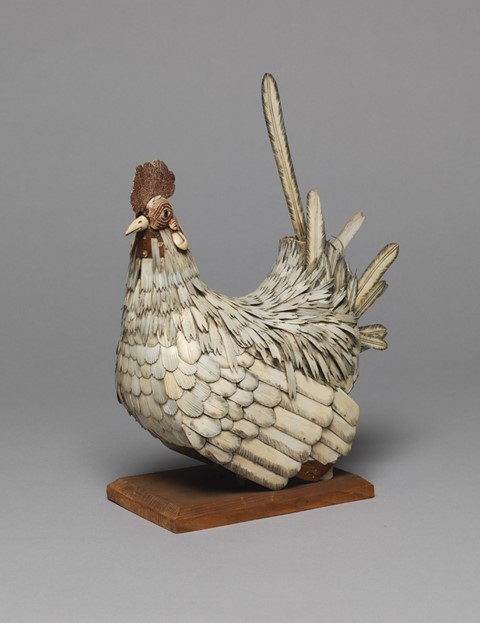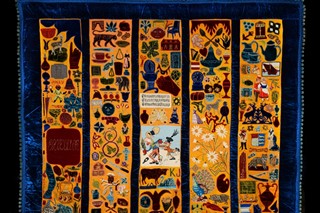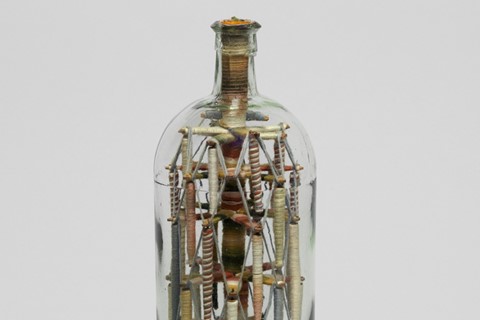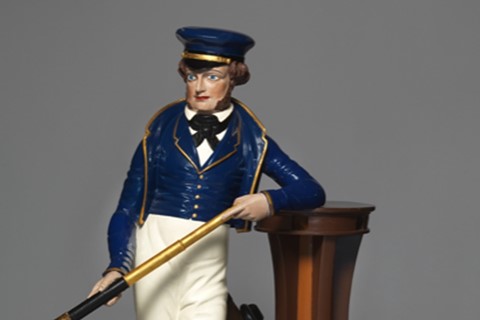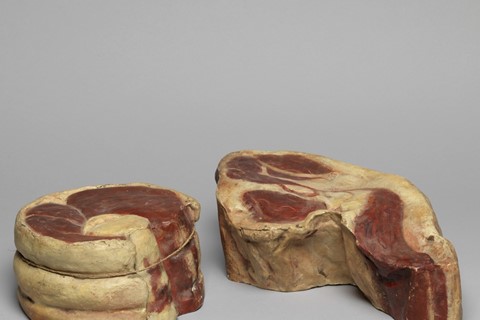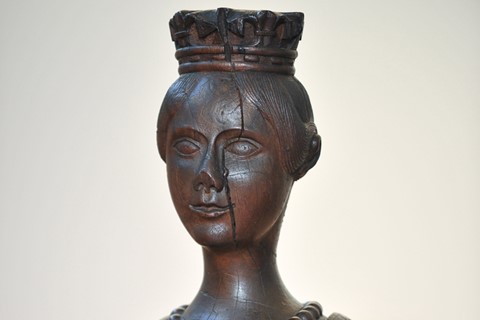As the very first major exhibition of British folk art opens at Tate Britain, we bring you a comprehensive guide to the genre
Anyone who’s seen The Wicker Man might find the eerie cult classic popping to mind as they enter Tate Britain’s new folk-art exhibition. Farmer and thatcher Jesse Maycock’s own wicker man from 1961 – it’s King Alfred, made of straw – is there to greet you, and sits alongside the giant boots, gloves and locks that were once used as shopfront trade signs. Throughout, this show confronts you with objects that are, on the whole, singular in execution, offering curious approaches to shape, perspective and form – especially given the institutional context. Unlike North America where folk art has long been catalogued and revered, historically, Britain hasn’t made a habit of placing items created by non-professional artists into venerated halls.
"Some of the RA’s brightest stars – Grayson Perry, Tracey Emin, Sarah Lucas – have manifestly drawn on folk traditions for their tactile, ‘crafty’ works"
As part of their founding principles of 1769, the Royal Academy made a clear distinction between what they considered fine art and what was deemed a lowly craft. ‘No needlework, artificial flowers, cut paper, shell work, or any such baubles should be admitted’, they declared. Thus disqualifying any embroidered bible quotes done in human hair, for example. And while ‘folk art’ is, rightfully, just as difficult to define as ‘art’ as a whole, it’s interesting to note that nearly 350 years on, some of the RA’s brightest stars – Grayson Perry, Tracey Emin, Sarah Lucas – have manifestly drawn on folk traditions for their tactile, ‘crafty’ works. While there are no names from the canon to be found in this exhibition, there are plenty of delights from all corners of the country, created over the last three hundred years by tailors, housewives, rag-and-bone men and soldiers. Here’s a brief guide to what to expect:
1. Compositions comprised of unexpected substances (above)
Sailboats and boxers ‘painted’ in wool, embroidered maps, a bone violin, papier mâché meat, leather Toby jugs; many folk-art materials are found in the scrap heap, or are associated with the trades or home arts. One thing is certain, there are no holds barred on inventiveness when it comes to choosing raw materials. This piece is a wonderfully detailed cockerel made of bones, salvaged from the kitchen by an eighteenth-century 'prison of war' interned near Peterborough.
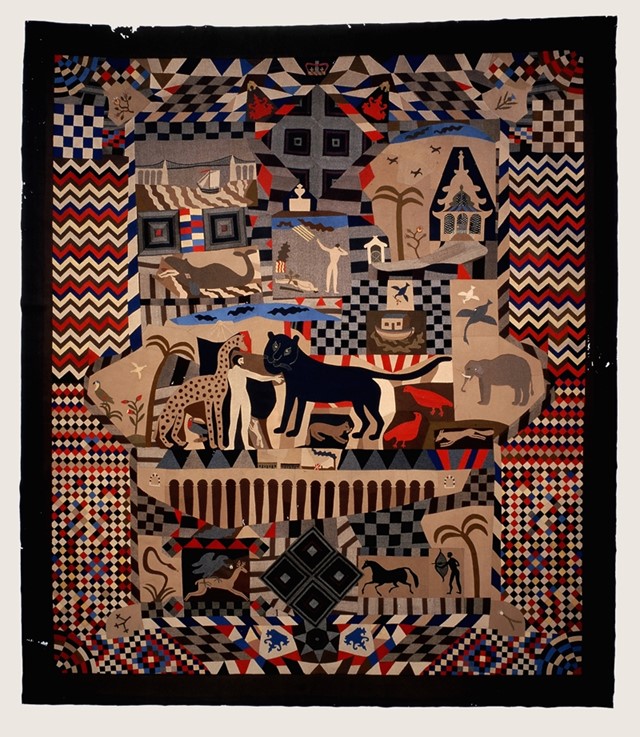
2. Complex and/or convoluted narratives
This coverlet is comprised of 4,525 separate pieces of woollen cloth, hand-sewn by tailor James Williams of North Wales over a decade in the early nineteenth-century. The scenes depicted range from British industrial feats (a suspension bridge, a steam train) to exotic climes (a Chinese pagoda, an African man hunting a wild horse) to biblical tales (Noah’s Ark, Adam naming the animals). Careening wildly all over the narrative shop, Williams, like many folk artists, is unfettered in his approach to non-linear visual storytelling – freely mixing history, myth, current events and personal anecdotes.
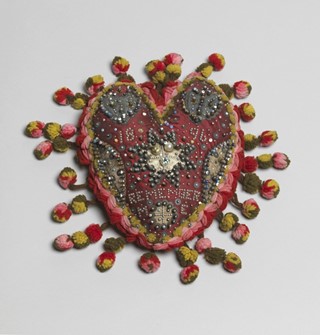
3. Sailors, sailors and more sailors
Our lads of the high seas have always been a popular folk-art subject: you find them and their ships in paintings, in wood form as shopfront figurines, and there’s even a whole room of figureheads in the exhibition. Sailors were often known to get crafty themselves. Sweetheart pincushions were sewn by them and by soldiers and sent home to loved ones to keep as mementos. This exuberant nineteenth-century cloth and bead heart with its ‘Remember Me’ slogan can be seen as a somewhat feminine precursor to what would come to be known as classic navy tattoos.
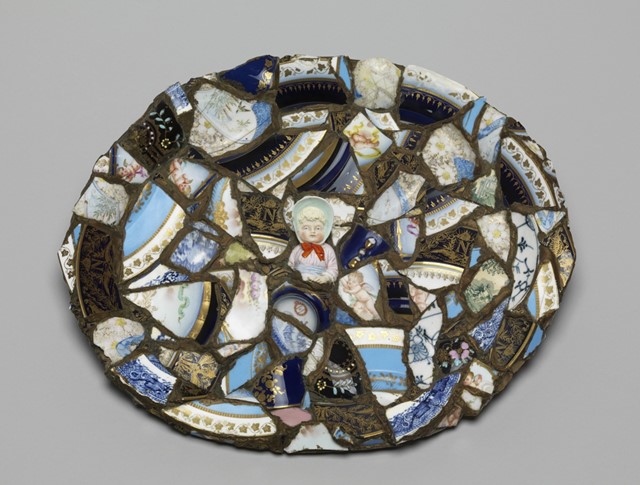
4. ‘Crazy’ designs
Boody ware was all the rage in the nineteenth-century North East and South West of England (and no doubt an inspiration to the crazy paving and decoupage of modern days). Once considered the playthings of children, broken china started to be recognised for its decorative value, and was affixed to plates, jugs and other homeware with abandon. The stakes were raised as seashells, coins, medallions and even dolls’ heads were thrown into the mix.
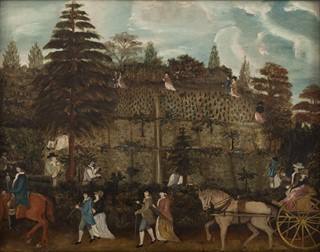
5. Idiosyncratic loveliness
Folk art is often described as the output of untrained artists working outside of metropolitan centres, whose worldview does not necessarily tally with the Grand Narratives of art history. Much of it speaks to local and rural traditions, including this painting of a country procession where the lack of perspective or tonal gradation renders it a surreal delight.
British Folk Art is at Tate Britain until August 31.
Text by Ananda Pellerin
